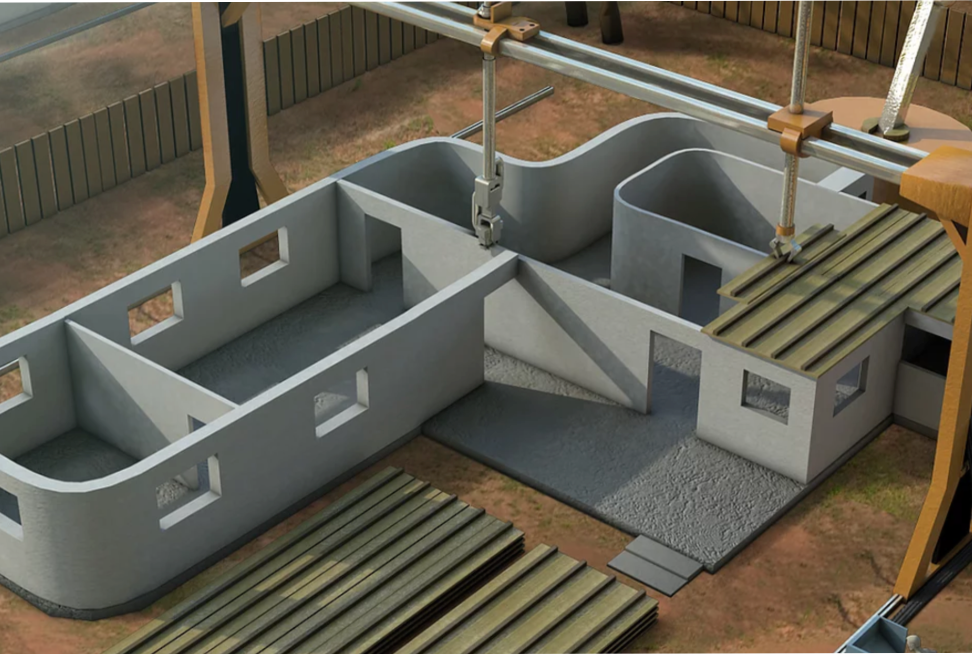Follow CONCERT on LinkedIn for more on the digital future of architecture.
Robotic technologies for transforming architectural designs into building components have advanced to the point where they are a practical means of quickly producing customized buildings. A recent article in Manufactur3D explained in depth about three technologies that are not only in use today, but are rapidly gaining traction in an industry that is expected to grow by more than 200% in the next couple of years.
Here are three quick takeaways:
Robotic Arm Extruders
What it is: A large robotic arm mounted on a set of guide rails. Driven by computer data, it operates at the job site.
Developed by: Behrokh Khoshnevis at the Contour Crafting Corporation
What it does: The contour crafting technique deposits construction materials, typically concrete, directly in place. It extrudes material through a computer-controlled nozzle to build up layers of material to ensure structural integrity.
What it’s used for: On-site, large-scale construction.
Sand 3D Printing
What it is: A binder jetting 3D printer. Driven by computer data, it creates building components on a particle bed.
Developed by: D-Shape
What it does: The printer expels alternating layers of sand powder and binding ink to create shapes that harden when combined.
What it’s used for: Foundations, partitioning walls, ceilings, stairs, large structures, furniture, and more unusual applications such as artificial reefs and abstract art structures.
Metal Structure 3D Printing
What it is: Wire Arc Additive Manufacturing (WAAM) technology combines a welding machine with a 6-axis computer data-driven robot.
Developed by: MX3D
What it does: Uses welding equipment, a nozzle and metal rods to build objects in a layer-by-layer process by dropping up to two kilograms of metal, such as stainless steel, bronze, and aluminium per hour.
What it’s used for: Complex metal structures.
Follow CONCERT on LinkedIn for more on the digital future of architecture.





